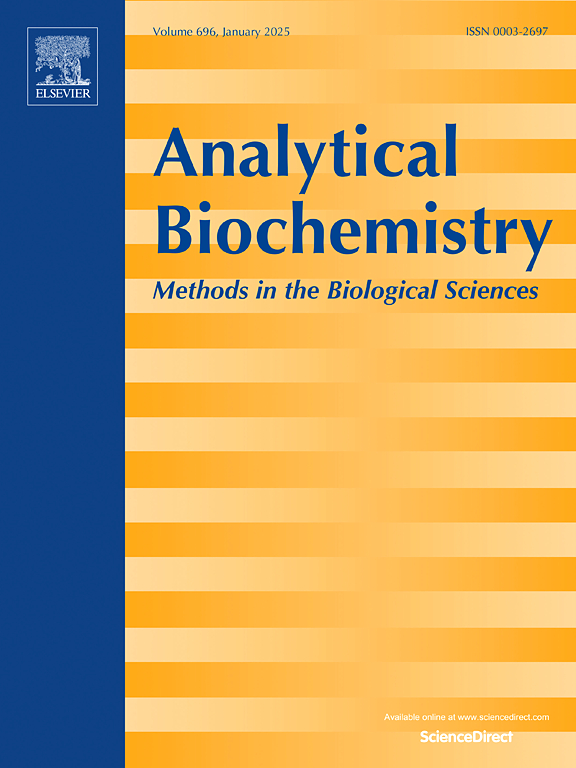A beginners guide to SELEX and DNA aptamers
IF 2.5
4区 生物学
Q2 BIOCHEMICAL RESEARCH METHODS
引用次数: 0
Abstract
SELEX stands for "Systematic Evolution of Ligands by Exponential Enrichment.” It is an in vitro, iterative, PCR-based, target-specific selection strategy used to generate single-stranded DNA (ssDNA) aptamers that bind a target of interest. Properly selected aptamers bind their targets with high affinity and specificity and have utility in a multitude of detection assays. They are thus similar to antibodies but have the advantage of being more stable and cheaper to produce. The SELEX process encompasses several steps, some of which are critical to the successful isolation of an aptamer. Careful analysis and optimization of the SELEX process are thus important. This review summarizes our own experience when we, as complete novices, were setting up the SELEX system in our lab. It is thus meant to give some general and practical but concise pointers for anyone interested in initiating their own SELEX experiments. As such, the review covers key elements of the SELEX process, including library design, target selection and immobilization strategies, aptamer binding conditions, partitioning techniques, and PCR optimization. We also discuss common pitfalls such as by-product formation and single-stranded DNA recovery challenges, along with practical strategies to overcome them. Emerging trends and post-SELEX considerations, such as sequencing, structure prediction, and chemical modifications, are included to guide beginners through every stage of aptamer development.

SELEX和DNA适体的初学者指南
SELEX代表“配体通过指数富集的系统进化”。它是一种体外,迭代,基于pcr的靶向特异性选择策略,用于生成结合感兴趣目标的单链DNA (ssDNA)适体。适当选择的适体以高亲和力和特异性结合其靶标,并在多种检测分析中具有实用性。因此,它们与抗体相似,但具有更稳定、生产成本更低的优势。SELEX过程包括几个步骤,其中一些步骤对于成功分离适配体至关重要。因此,仔细分析和优化SELEX过程非常重要。本文总结了我们作为完全的新手在实验室中设置SELEX系统时的经验。因此,它旨在为任何有兴趣启动自己的SELEX实验的人提供一些通用和实用但简洁的指针。因此,该综述涵盖了SELEX过程的关键要素,包括文库设计,目标选择和固定策略,适体结合条件,分区技术和PCR优化。我们还讨论了常见的陷阱,如副产品的形成和单链DNA恢复挑战,以及克服它们的实用策略。新兴趋势和后selex考虑因素,如测序,结构预测和化学修饰,包括指导初学者通过适体开发的每个阶段。
本文章由计算机程序翻译,如有差异,请以英文原文为准。
求助全文
约1分钟内获得全文
求助全文
来源期刊

Analytical biochemistry
生物-分析化学
CiteScore
5.70
自引率
0.00%
发文量
283
审稿时长
44 days
期刊介绍:
The journal''s title Analytical Biochemistry: Methods in the Biological Sciences declares its broad scope: methods for the basic biological sciences that include biochemistry, molecular genetics, cell biology, proteomics, immunology, bioinformatics and wherever the frontiers of research take the field.
The emphasis is on methods from the strictly analytical to the more preparative that would include novel approaches to protein purification as well as improvements in cell and organ culture. The actual techniques are equally inclusive ranging from aptamers to zymology.
The journal has been particularly active in:
-Analytical techniques for biological molecules-
Aptamer selection and utilization-
Biosensors-
Chromatography-
Cloning, sequencing and mutagenesis-
Electrochemical methods-
Electrophoresis-
Enzyme characterization methods-
Immunological approaches-
Mass spectrometry of proteins and nucleic acids-
Metabolomics-
Nano level techniques-
Optical spectroscopy in all its forms.
The journal is reluctant to include most drug and strictly clinical studies as there are more suitable publication platforms for these types of papers.
 求助内容:
求助内容: 应助结果提醒方式:
应助结果提醒方式:


